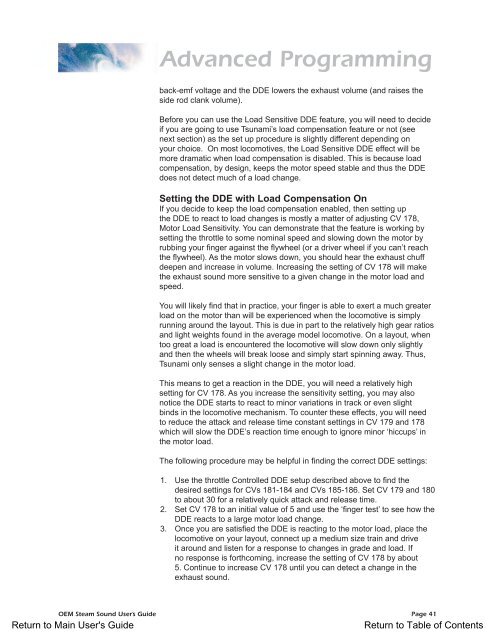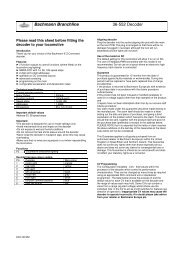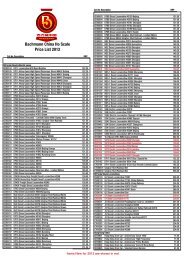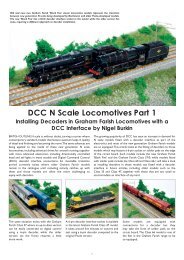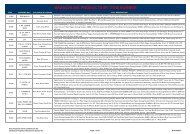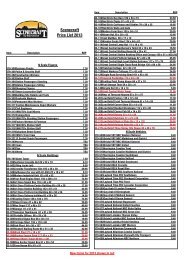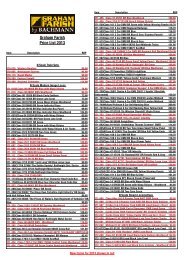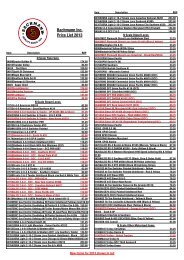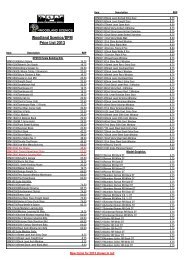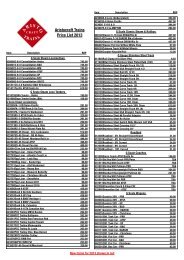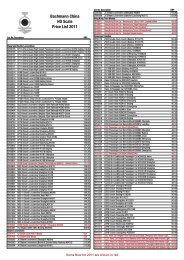Spectrum Steam Sound User Guide(1.4MB) - Bachmann
Spectrum Steam Sound User Guide(1.4MB) - Bachmann
Spectrum Steam Sound User Guide(1.4MB) - Bachmann
Create successful ePaper yourself
Turn your PDF publications into a flip-book with our unique Google optimized e-Paper software.
Advanced Programmingback-emf voltage and the DDE lowers the exhaust volume (and raises theside rod clank volume).Before you can use the Load Sensitive DDE feature, you will need to decideif you are going to use Tsunami’s load compensation feature or not (seenext section) as the set up procedure is slightly different depending onyour choice. On most locomotives, the Load Sensitive DDE effect will bemore dramatic when load compensation is disabled. This is because loadcompensation, by design, keeps the motor speed stable and thus the DDEdoes not detect much of a load change.Setting the DDE with Load Compensation OnIf you decide to keep the load compensation enabled, then setting upthe DDE to react to load changes is mostly a matter of adjusting CV 178,Motor Load Sensitivity. You can demonstrate that the feature is working bysetting the throttle to some nominal speed and slowing down the motor byrubbing your finger against the flywheel (or a driver wheel if you can’t reachthe flywheel). As the motor slows down, you should hear the exhaust chuffdeepen and increase in volume. Increasing the setting of CV 178 will makethe exhaust sound more sensitive to a given change in the motor load andspeed.You will likely find that in practice, your finger is able to exert a much greaterload on the motor than will be experienced when the locomotive is simplyrunning around the layout. This is due in part to the relatively high gear ratiosand light weights found in the average model locomotive. On a layout, whentoo great a load is encountered the locomotive will slow down only slightlyand then the wheels will break loose and simply start spinning away. Thus,Tsunami only senses a slight change in the motor load.This means to get a reaction in the DDE, you will need a relatively highsetting for CV 178. As you increase the sensitivity setting, you may alsonotice the DDE starts to react to minor variations in track or even slightbinds in the locomotive mechanism. To counter these effects, you will needto reduce the attack and release time constant settings in CV 179 and 178which will slow the DDE’s reaction time enough to ignore minor ‘hiccups’ inthe motor load.The following procedure may be helpful in finding the correct DDE settings:1. Use the throttle Controlled DDE setup described above to find thedesired settings for CVs 181-184 and CVs 185-186. Set CV 179 and 180to about 30 for a relatively quick attack and release time.2. Set CV 178 to an initial value of 5 and use the ‘finger test’ to see how theDDE reacts to a large motor load change.3. Once you are satisfied the DDE is reacting to the motor load, place thelocomotive on your layout, connect up a medium size train and driveit around and listen for a response to changes in grade and load. Ifno response is forthcoming, increase the setting of CV 178 by about5. Continue to increase CV 178 until you can detect a change in theexhaust sound.OEM <strong>Steam</strong> <strong>Sound</strong> <strong>User</strong>’s <strong>Guide</strong> Page 41Return to Main <strong>User</strong>'s <strong>Guide</strong>Return to Table of Contents


